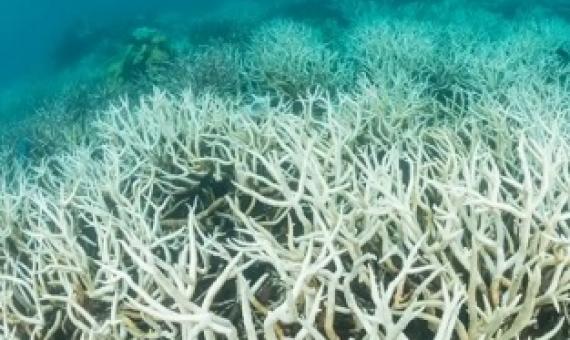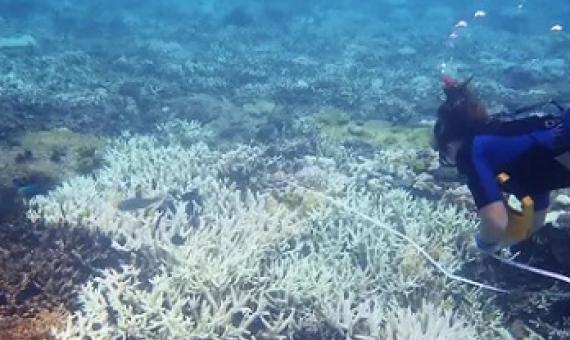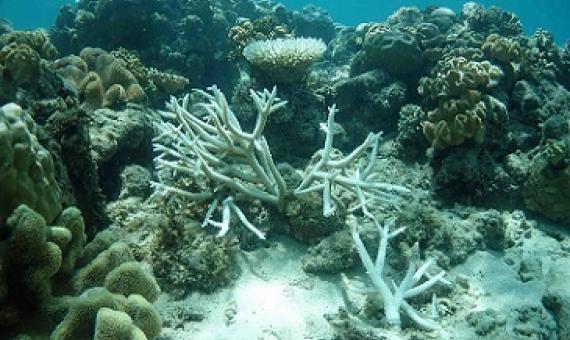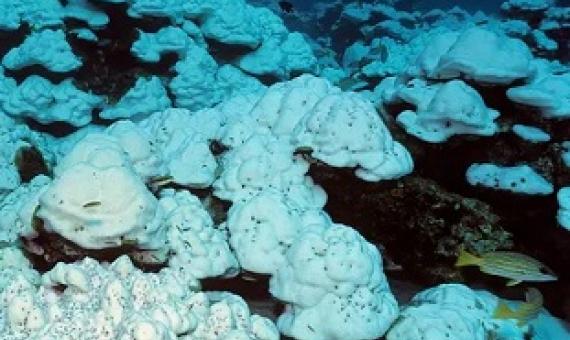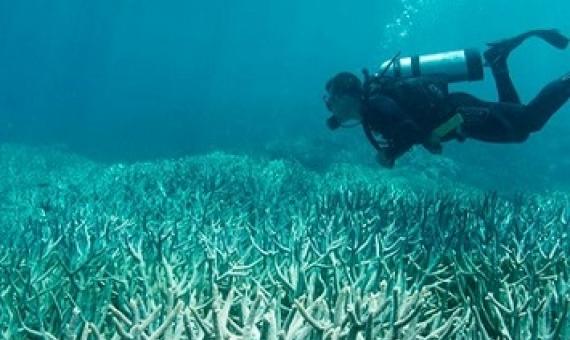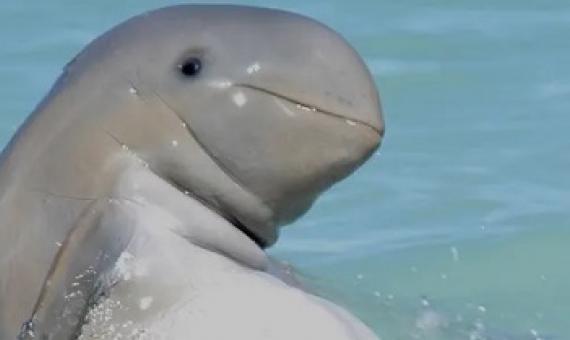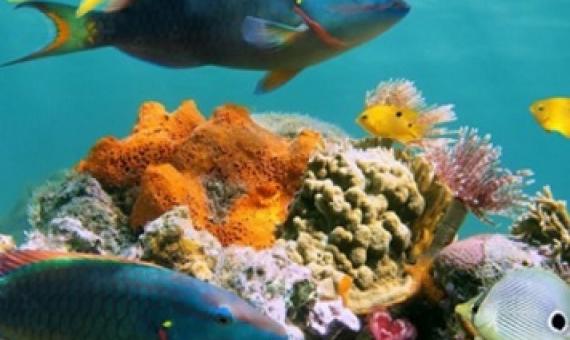Rising ocean temperatures could have pushed the world’s tropical coral reefs over a tipping point where they are hit by bleaching on a “near-annual” basis, according to the head of a US government agency program that monitors the globe’s coral reefs. Dr Mark Eakin, coordinator of Coral
The government agency responsible for the Great Barrier Reef has confirmed the natural landmark has suffered a third mass coral bleaching episode in five years, describing the damage as “very widespread”.
The Great Barrier Reef has experienced a third mass coral bleaching event in five years, according to the scientist carrying out aerial surveys over hundreds of individual reefs.
Scientific Consensus Statement 2013 - Chapter 2: Resilience of Great Barrier Reef marine Ecosystems and Drivers of Change
This chapter focuses on the temporal dynamics, spatial extent and cumulative impacts of current and future drivers of change on Great Barrier Reef water quality, and subsequent impacts on marine ecosystems in the Great Barrier Reef Marine Park. These include the acute influences of large flood events driven by extreme weather, salinity stress, tropical cyclones, thermal stress, crown-of-thorns starfish outbreaks and other anthropogenic drivers such as coastal development activities.
The Great Barrier Reef is still at risk of a widespread outbreak of coral bleaching despite a cyclone to the far west helping to temporarily cool stressed corals, according to US and Australian science agencies.
The Great Barrier Reef could be heading for a third major coral bleaching outbreak in the space of five years if high ocean temperatures in the region do not drop in the next two weeks, scientists and conservationists have warned.
Aerial surveys by the Australian Research Council Centre of Excellence for Coral Reef Studies in Townsville, Australia, revealed that two-thirds of the Great Barrier Reef had severely paled in 2016 and 2017, “bleaching” under the extreme stress of marine heat waves that can kill corals.
Harmful levels of long-banned chemicals, including the pesticide DDT, have been found in the tissues of two vulnerable dolphin species swimming in waters flowing into the Great Barrier Reef.
Creating marine protected areas (MPAs) has become a more popular management and conservation strategy to counteract various anthropogenic risks and hazards... Nature’s treasure chests, coral reefs, encircled by bright majestic fish are succumbing to the disastrous effects of climate change.
The first Great Barrier Reef night and day citizen science program aligned with the Australian school curriculum has been launched by Sunlover Reef Cruises...Sunlover’s Marine Biologist for a Day program has experienced phenomenal growth over the past two years attracting school groups from aroun

